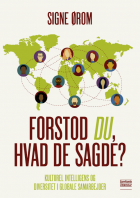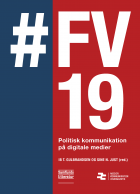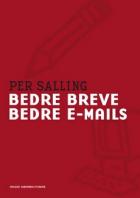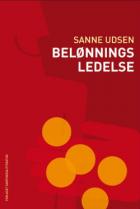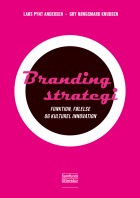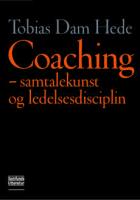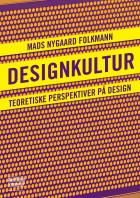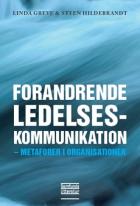Content section
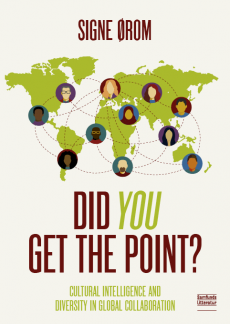
Did You Get the Point?
Cultural Intelligence and Diversity in Global Collaboration
Buy the book
Aditional information
NB: For en mere udførlig indholdsfortegnelse, vælg 'Kig i bogen' herover.
Introduction 13
The cultural diversity bonus 13
The book’s structure 16
Part 1. What is culture?
Chapter 1
Cultural intelligence in global collaboration 20
Some bad advice: Treat others as you would like to be treated 21
Case: Lars and Abdul hand in hand in Dubai 21
What is culture? 25
CQ: Your cultural intelligence quotient 32
CQ-brain (knowledge) 34
CQ-heart (motivation) 43
CQ-eye (analysis) 46
CQ-muscle (action) 47
Your personal CQ-strategy 49
The cultural diversity bonus 54
Summary 56
Part 2. Cultural differences in international cooperation
The structure of the chapters 58
Chapter 2
Egalitarianism and hierarchy in multicultural collaboration 62
Case: Heidi’s virtual door is always open for Cheng-Gong 63
Good management differs by culture 63
Cultural differences in power distance 64
Denmark – the flattest country in the world 67
The cultural diversity bonus: The positive aspects of hierarchy 72
Country focus: Cooperation with countries that have hierarchical cultures 74
CQ in practice 79
Cultural differences in expectations of a manager 79
Respect the lines of communications and chain of command in a hierarchy 88
Make sure to match titles 90
Forms of address: Hierarchy in language 92
Clothing shows status 96
Summary 97
Chapter 3
Risk willingness across cultures 98
Case: Thomas’ new machine in Poland 99
Risk willingness as a cultural dimension 102
Denmark: the place to make mistakes 107
High risk tolerance or openness to change? 115
Country focus: Risk-averse cultures 119
CQ in practice 123
Define clear roles and working areas 123
Give critical feedback in a culturally intelligent way 125
Input for brainstorming 128
Summary 128
Chapter 4
Individualists and collectivists in the same team 130
Case: Phuong experiences harsh feedback in Denmark 131
Individualism versus collectivism 132
Danes are “group individualists” 136
Country focus: Extreme individualist and collectivists 140
CQ in practice 144
Brainstorming and input: How can I make sure everyone speaks up? 144
Motivating with CQ: Self-management, job security or a bonus? 148
Summary 150
Chapter 5
When collaborative cultures meet competitive cultures 152
Case: American Jack and Swedish Inga misunderstand each other 153
Collaborative cultures and competitive cultures 154
The Danish collaborative culture 156
Work-life-balance and the Danish status currency 160
Are you driven by success, loyalty, or collaboration? 163
Country focus: Competitive cultures 166
CQ in practice 168
Should you be available during vacations? 169
How culture affects gender roles 170
How much can you brag? 172
Retention and motivation of international labor 174
Summary 176
Chapter 6
Is the relationship or the task more important? 178
Case: Xenia learns to drink caipirinhas in Brazil 179
The cultural dimension: Task orientation or relationship orientation? 180
Denmark: World champion of trust 183
Danes: Trusting but naive, irresponsible, and unfriendly? 187
Country focus: Relationship-oriented cultures 192
CQ in practice 195
Do we start on time or when everyone is ready? 195
Relationship building: A part of the job 197
Navigating formal and informal interaction 199
Hit the road and fill your bags with CQ 201
Summary 202
Chapter 7
Multicultural communication – Did you get the point? 204
Case: Sofia misunderstands the Indian ‘yes’ 205
Direct versus indirect communication 209
Denmark: “Call a spade a spade” 213
Direct managers in indirect cultures 215
Country focus: Direct communication cultures 218
Country focus: Indirect communication cultures 220
CQ in practice 224
Adjust your communication with cultural intelligence 225
Give feedback in a culturally intelligent way 228
What is polite? Positive and negative politeness 234
Know the body’s cultural language 235
High context versus low context 241
Do we show our feelings externally or keep them inside? 243
When we communicate with words and feelings 245
Summary 249
Part 3. The new virtual world – cooperation at a distance
Advantages and disadvantages of virtual cooperation 252
Cultural intelligence in virtual cooperation 255
Chapter 8
Presence at a distance: Trust and relationships in multicultural virtual cooperation 256
Case: Samira’s e-meal 257
Trust is challenged in virtual collaboration 258
Five actions: Trust-building in virtual, multicultural teams 264
Five exercises: Virtual team building 269
Summary 274
Chapter 9
Culturally inclusive virtual communication 276
Case: Jon gets input from his Thai colleagues on virtual meetings 277
Think culture into your virtual communication 280
Choice of virtual communication channel 281
Process with synchronous, semi-synchronous, and asynchronous communications channels 287
A good video meeting for a multicultural group 291
Summary 297
Postscript 299
Literature 301
Lignende udgivelser


Sidebar section
Pensumeksemplar
Som underviser har du mulighed for at anmode om et pensumeksemplar af denne titel.
Request free copyHar du spørgsmål?
Du er altid velkommen til at kontakte os på info@samfundslitteratur.dk eller på telefon: 44 22 38 80.
Læs om vores persondatapolitik.
Kontakt fagredaktøren
Har du en idé til en lærebog, eller mangler der en bog inden for dit fag, hører vi gerne fra dig! Skriv til fagredaktør Lone Fredensborg på lfr@samfundslitteratur.dk.

